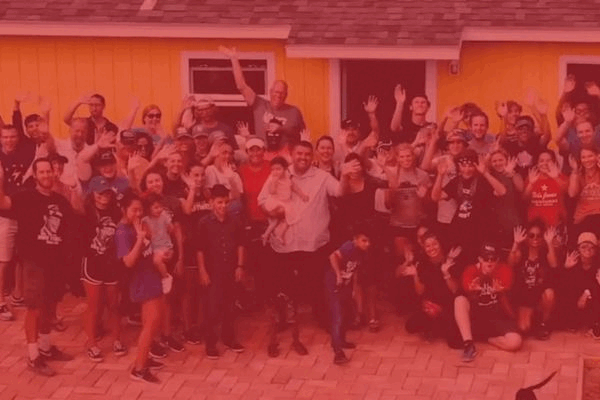Every once in a while a there’s a new cultural phenomenon that gets everyone talking. I’m sure that you can recall at least one with some fondness from when you were a teen. Maybe it was a movie that all of your friends rushed to go see the midnight release [that was Lord of the Rings for me]. Or maybe it was an album that dropped and everyone was playing it on repeat [50 Cent’s Get Rich or Die Trying]. There are some things in pop culture that seem to be universally praised. Yet there are other phenomena that generate so much buzz because they are so controversial.
Jonathan Haidt’s latest book, The Anxious Generation: How the Great Rewiring of Childhood is Causing an Epidemic of Mental Illness, is one of those controversial pieces of pop culture. This is a book, that to be honest, I’ve been waiting for since I heard he was working on it. It’s controversial for good reasons. In this book he makes some pretty bold claims—that will either seem spot on or alarmist depending on who you are—that have some huge implications for how we understand GenZ. To cut to the chase, he argues, using a ton of data and studies, that technology has not only rewired GenZ’s cognitive functions but that it’s also rewired GenZ’s outlook on life. He talks about the difference between a “play-based childhood” and a “phone-based childhood.”
BIG IDEA: A “Play-Based Childhood (and adolescence)” is crucial for developing into people who flourish socially. The “Phone-Based Childhood (and adolescence)” has had severe negative effects on GenZ.
The play-based childhood is embodied, synchronous, involves one to one or one to several communication, and encourages a high bar for entry and exit in communities. The phone-based childhood encourages an outlook that is disembodied, asynchronous, one to many communication, and a low bar for entry and exit. His findings are based on his area of expertise—he’s a psychologist teaching at NYU's school of business. Childhood, cognitively speaking, is extremely formative. Play-based childhood is essential for developing social skills and conflict resolution. These crucial life skills and how to carry them out get engrained into our brains within the first 15 years of our life. Moving away from a play-based childhood to a phone based childhood undercut the process of human socialization that has developed over millennial. Kids have moved from what he calls “Discover Mode” where the attitude puts an emphasis on socialization, looking for opportunities, and a growth mindset to “Defend Mode” where the attitude puts an emphasis on scanning for dangers, a scarcity mindset, clinging to safety, and anxiety. You pair this “great rewiring” with the additional harms of social media for adolescents, e.g. sleep deprivation, attention fragmentation, and addiction, not to mention the multitude of ways social media has been show to be especially harmful for girl’s self-images and you get the crisis of the anxious generation.
Although Haidt is an atheist he recognizes the severe spiritual implications of his findings. “The phone-based life produces spiritual degradation, not just in adolescents, but in all of us” (199). It blocks or counteracts six practices (202) that are crucial for growing in our faith:
Shared sacredness
Embodiment
Stillness, silence, and focus
Self-transcendence
Being slow to anger, quick to forgive
Finding awe in nature
We were designed by God to worship in community, community actually strengthens and grows our understanding of God. Rituals help us to understand the sacredness and holiness of God. We are designed to need moments of stillness and silence. But we live in a perpetually distracted state. Being slow to anger and quick to forgive is a command but social media trains us to do the opposite, it conditions us to be reactive and make rapid judgements on others who we barely know. We were made to encounter God in the grandeur of nature, the beauty of music, works of art, etc. But noticing God requires slowing down…. These building blocks of the spiritual life become harder and harder to experience when phones become more than an instrument and they become a way of life.
How do we undo the effects on the “anxious generation?” Haidt is more optimistic than I am about “undoing” the effects. I’m more optimistic about our ability to mitigate the effects. By increasing certain embodied practices, we can lessen the gravity of the effects of a phone-based childhood (and adolescence).
Put it into Practice!
1. Invite adolescents to participate in “tasks” with you. That might be a project, an errand, going shopping with you, etc. This doesn’t sound like “play” but it helps them feel useful and connected to the real-world communities they are part of. Plus it’s great contact work!
2. Find ways for them to lead. Kids need caring adults in their life. But learning to be a caring teen in the life of another teen can help them to develop the mindset needed to undo the disembodied isolated tendencies so prevalent in culture.
3. Get them outside! Backpacking, hiking, fishing trips. Time out in nature helps cultivate a sense of awe and curiosity which we know is crucial for human flourishing.
4. Carefully consider your own use of social media around students. Are you on your phone as much as your Young Life friends? Be the one to engage in an embodied way even though everyone around you might be staring at their phone.
5. Encourage activities – games that get them to interact and socialize. Social interactions can be anxiety producing for many GenZers. Consider how you might ease them into smaller social interactions that will serve them in the long run. Some teens need to be re-socialized after the isolation of Covid + the “safety” of the digital life.
Bonus: Dig into Young Life’s Relate study to learn even more about Gen Z and how they operate!
Written by: Chris Woznicki










